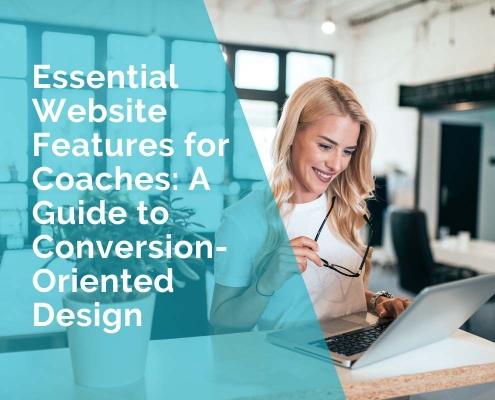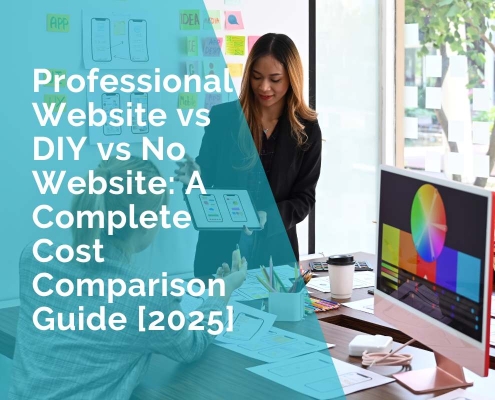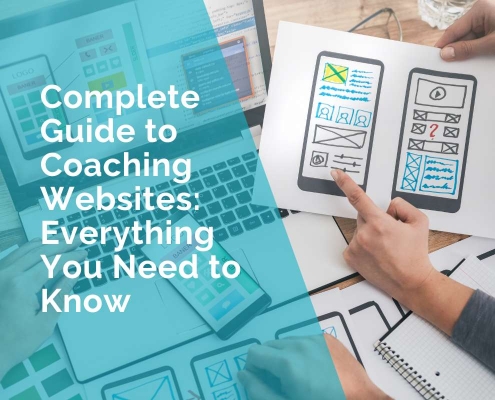The Beginner’s Guide to Automating Your Small Business Website in 2025
Are you a small business owner trying to walk in today’s digital world? It’s hard, right? You are doing marketing, sales, and customer service all at once. But what if your small business website could do more for you? Then, you could spend more time on what you do best.
That’s where automation helps. Automation is no longer just for big companies. It’s now a must for all businesses. The market is set to grow from $5.65 billion in 2024 to $13.29 billion by 2031. It’s obvious: automation isn’t optional; it’s necessary for growth.
By the end of 2025, most companies will use marketing automation. 91% of business leaders say their teams are asking for it. This rising demand also increases the need for reliable web application development services that hold expertise in creating custom automated platforms based on SMBs’ requirements.
If you are thinking, “This sounds good, but how do I start?” don’t worry. You are at the right place. This guide explains what website automation is, why it’s vital, and how to automate your website by 2025.
On top of that you also explore the basic tools on how to set up and automate your customer journeys, and how to make personalized content quickly and effectively.
Why Your Small Business Website Needs Automation Now?
Running a small business in 2025 isn’t easy. You probably have a tight budget, less staff or time. Doing tasks like marketing, sales, or customer service by hand is hard to manage.
Also, the competition is tough. People now expect fast and personal service. It’s not a bonus, it’s a must.
Here’s how small business website automation can help:
Reclaim Your Time
Think about the tasks you do again and again— sending emails, posting on social media, or updating customer info. Automation can handle these for you. Nearly 50% of small businesses already use it for email campaigns. Save time by sending emails automatically!
Increase Business’ Productivity
Automating routine tasks saves time. It allows you to focus on core activities such as strategy, product development, innovation, and direct customer engagement, and so on. Companies using full automation work faster and keep customers more engaged. It’s about doing what truly matters.
Offer Personalized Experiences
People of this digital world expect personalized touch. Manual work takes too much time. Website automation allows you to provide content based on each user’s activity.
Did you know 77% of marketers use AI to create personalized content? Your small business website automation can show the right content to the right person—fast and easy.
Boost Profitability and Sales
Businesses generate approximately $5.44 for every $1 invested on marketing automation. Small companies realize as much as 25% more ROI due to enhanced efficiency and focused marketing.
Automation enables personalized experience, sending the relevant content and offers at the right time to its target audience. It helps turn leads into customers with less effort.
Stronger Customer Loyalty
Automation offers personalized and timely messages to your valuable customers. Ofcourse, regular follow-ups, birthday greetings, or promotions on the basis of previous purchases make customers feel valued and linger longer.
Tools like HubSpot, Insta page and ActiveCampaign assist in this. HubSpot’s email automation is used by 71% of small businesses. 70% of marketers use ActiveCampaign to deliver targeted content and improve conversions. This web apps & website automation guide is your first step to using these tools to grow your business.
Essential Tools to Automate Your Small Business Website in 2025
Now, let’s look at the tools that make small business website automation possible.
Email Marketing Automation Platforms
These tools promote modern marketing. They help you streamline email campaigns, personalize interactions, as well as boost engagement.
- Popular Tools: Top picks are HubSpot, Instapage, Mailchimp, and Brevo. They offer features like email automation, audience sorting, and AI content help. Each tool has its own pricing. You can go with which fits your needs and budget.
- AI Personalization: Leverage AI to send improved, more personalized emails.
- Smart Segmentation: Most tools let you group people by age, buying habits, actions, or likes. This helps you send the right message to each group.
- Seamless Integration: Look for tools that work well with others. integrate with popular CRM systems. For instance, HubSpot connects with over 200 different services. This helps you run everything smoothly in one place.
Our recommendation is to select a tool that includes such features as personalization, smart grouping, and easy connection to help you scale your business.
Social Media and Content Automation Tools
Running your social media and content takes a lot of time. But you can save it by using smart tools. Here’s how:
- Post Scheduling: Tools like Hootsuite and Buffer let you plan posts early. This saves time. A recent study found that 63% of small businesses use these social media scheduling tools to make work easier.
- Track performance: Tools like Hootsuite and Meta Business Suits help you see how your social content is performing. You can check the engagement rate, audience growth and much more. These devices can also help you monitor the brand mentions and also respond to customer inquiries in real time.
- AI for Content: Tools like WordLift and Content Blossom use AI to create and share smart content. 77% of marketers use AI for better results.
Why Use It:
- Saves time
- Makes content personal
- Grows faster
- Make Your Content Better: Automation tools use AI to study your content. They help you to analyze and improve your content’s performance across various channels.
Using these tools to automate small businesses websites can help you work faster, post smarter and create more with marketing – especially if you explore AI videos to diversify your content.
Customer Relationship Management (CRM) Automation
CRM systems have come a long way. They’re not just contact lists anymore. Now, they help businesses work faster and connect better with customers with its robust automation features.
- Smarter CRM Tools: Modern CRMs offer automation to save time and give a personal touch. Hence, 91% of business leaders asking for more automation.
Why CRM Automation is Useful:
- Faster Sales: Follow-ups and messages are automatic.
- Less Manual Work: Routine tasks are done by the system.
- Better Customer Service: More personal and consistent.
- Omnichannel Integration: A good CRM connects email, SMS, social media, and web in one place. This gives a full view of customer chats.
- AI Insights: The CRM shows real-time data about what customers want. This facilitates making wise business decisions.
Implementing a strong, AI-based CRM system is the most important thing for small enterprises to expand and achieve improved results.
How to Launch Your First Marketing Automation Campaign?
Now you know the tools and why automation helps. So let’s put it! This may seem difficult at first, but with the right steps you will get the results.
1. Set Clear Goals and Select the Right Channels
Before starting, know what you want.
- Make Clear Goals: Don’t just say “I want more sales.” Be more exact. Use SMART goals:
- Specific
- Measurable
- Achievable
- Relevant
- Time-bound
Example: “Increase sales by 18% in 6 months using email campaigns.”
B2B: “Grow conversions by 20% with lead follow-ups.”
E-commerce: “Recover 12% of lost sales with cart emails.”
- Pick the Right Channels:
Where are your customers? That’s where your automation should be. If they use social media a lot, focus on that. If they prefer email, tools like HubSpot or WebFX for email campaigns are your go-to.
- Common Channels for Automation:
- Email: Drip emails, cart reminders, and custom newsletters
- Social media: Auto posts and ads.
- Content: Auto blog posts.
- Customer Journey: Welcome new users, guide leads, and keep loyal ones happy.
Setting clear goals and picking the right channels gives your automation campaign a strong start.
2. Build Your Customer Journeys and Workflows
This is where you plan your customer’s path and set up automated steps.
- Map the Customer Journey:
Envision your customer’s experience—from learning about you to becoming a loyal buyer. - Create Automated Workflows:
Once the path is clear, build steps that run automatically.
Simple Workflow Example:- Trigger: A person downloads your ebook.
- Action: Send a “thank you” email with a link to a blog.
- Wait: 3 days.
- Action: Send a follow-up email with a case study.
- Check: Did they click the link?
- Action: If yes, send another email offering a free trial or demo.
- Segmentation:
Around 56% of marketers use automated business websites & web apps to split their audience into groups.
This helps you send the right message to the right people. You can group by age, interest, company size, or behavior.
By planning your customer journey and setting up automated steps, you guide people smoothly through your process. This saves time and helps turn leads into happy customers.
3. Create Personalized Content With AI
AI helps you create personal content fast without a big team.
AI + Human Touch: There are about 77% of marketers who use AI to personalize content. Tools like HubSpot or Instapage help you make templates. Then You can add customer details, names, past orders, or products viewed.
Sound Like Your Brand: Train AI with your old content to sound like you. Always check the final content to make sure its accuracy and it fits your style.
Quick Tips:
- Start small with product info or posts.
- Use AI for ideas; humans write the rest.
- Check content often for tone and accuracy.
With AI and human help, you can create personal content at scale and boost outcome effectively.
Ready to Automate Your Website or Web Apps?
Marketing automation is no longer a trend. It’s a smart move for small businesses in 2025. The market has an upward trend, and the advantages are evident.
Through the use of appropriate instruments, you are able to set up the automatic emailer, social media, and customer assignments. This will help you save time, increase the level of participation and thus make your business grow.
It might initially appear big but with an intelligent plan, it is simple to begin. So, are you prepared to tap into the full potential of your website? We think you are!
****
By Patel Nasrullah
Patel Nasrullah is the co-founder of Peerbits, a global tech company specializing in software development, mobile and web app development, DevOps, and cloud solutions. With over 10+ years of experience, he leads initiatives for the company’s diverse service profiles. Patel’s deep expertise in scalable systems and agile delivery helps businesses accelerate innovation and build high-performing digital products.












